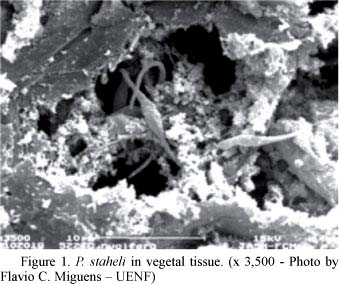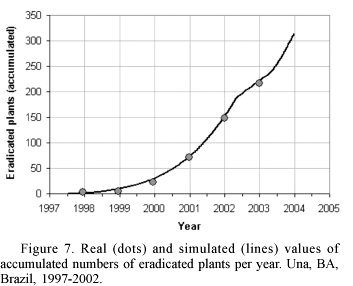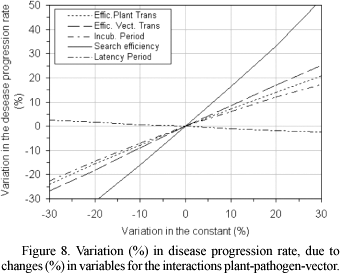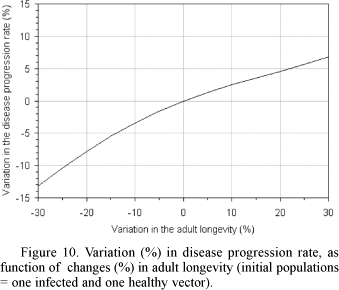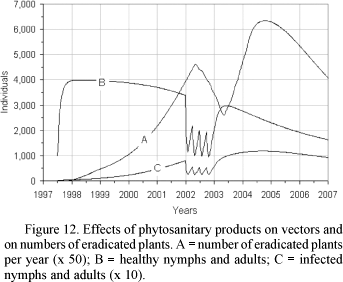A mathematical deterministic compartmental model of a system composed by the host plant - coconut palms, the pathogen microorganism - Phytomonas staheli McGhee & McGhee, and the insect vector - Lincus lobuliger Bred. (Hemiptera: Pentatomidae) was developed. A healthy insect becomes infected after feeding on a diseased tree starting an epidemic by disseminating P. staheli to healthy palms. This process initiates an exponential disease growth that decreases when the number of infected plants increases. The software Vensim DSS® was used as a tool to build a simulation model of disease dynamics. Compartments (stocks) for healthy, infected and eradicated plants represented the plant components of the system. There are two sub models for the insect vector population; the compartments represent each life stage of the healthy and infected vector population. The simulation outputs were compared with data from a recorded epidemic of Phytomonas that occurred at the Experimental Station Lemos Maia (Cocoa Research Center, CEPLAC/CEPEC), located at Una, Bahia. Here we present extensive data on the sensitivity analysis of the parameters and results from simulations of application of epidemics control methods. The model indicates that control techniques for the vector only delays the spread of the disease, and that it would be more convenient not to apply control techniques for Lincus sp. in areas where the disease is absent.
Mathematical model; insect vector; Lincus

